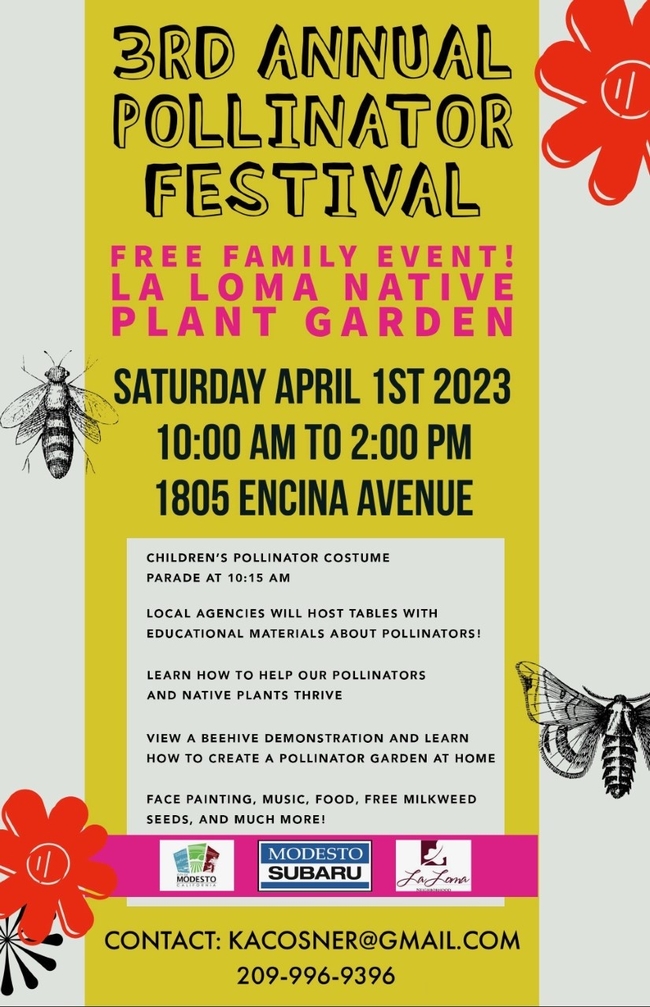- Author: Kathy Keatley Garvey
The late Argentine-born biologist Beatriz Moisset (1934-2022) of Willow Grove, Pa., called the insect "A Pollinator with a Bad Reputation."
Moisset, who received her doctorate from the University of Cordoba, Argentina, and authored the book, Bee Basics, an Introduction to Our Native Bees, was referring to bee flies, from the family Bombyliidae. In their larval stage, these flies parasitize the eggs and larvae of ground-nesting bees, beetles, and wasps.
They superficially resemble bees. If you look closely, however, they have one-pair of wings (bees have two pairs), and their antennae are short and stubby, unlike that of bees.
They neither bite nor sting. Bombyliidae includes some 4500 described species, found throughout North America, Europe and Asia, with many more undescribed.
If you see these long-legged, fuzzy-looking insects, they're usually foraging on flowers or hovering above the ground.
"The reason why it diligently hovers over bare ground early in the spring is that it is looking for bee nests," Moisset wrote in a piece published on the U.S. Forest Service website. "The bees dig tunnels and lay their eggs at their bottoms after collecting enough pollen to feed the larvae. This requires numerous trips, thus the bee fly takes advantage of the mother's absence and lays its eggs in such nests. Making use of its flying prowess, it does not even need to land but it flicks its abdomen while hovering over the open burrow, letting one egg fall in or near it."
"The fly larva finds its way to the chamber where the mother bee has laid the provisions and the egg and proceeds to feed on the stored pollen," Moisset explained. "Afterwards it devours the bee larvae; when it is fully grown, it pupates and stays inside the nest until next spring."
We spotted a bee fly in a Vacaville pollinator on Sept. 19. It zoomed over a yellow zinnia, hovered, and then dropped down to sip some nectar. Meanwhile, looking like a cross between a bee and a fly, it skirted syrphid flies and honey bees also intent on getting their share of nectar.
The bee fly is aptly named.




- Author: Anne Schellman
Join local agencies, community partners, Stanislaus County residents, and more in celebrating this fun and educational event in Modesto.
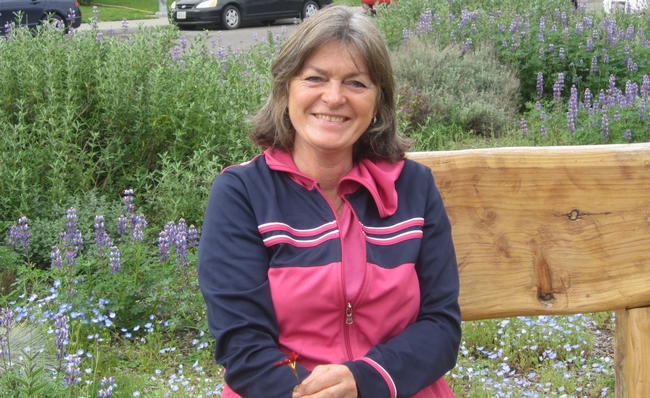
Several local agencies will have booths with educational information about pollinators and how we can help them thrive. Come spin the wheel/guess the pollinator at the UC Cooperative Extension Master Gardener Program table and take home a sticker or a bookmark.
This is a free family event with many activities for children. Crafts and games will also be included. A demo beehive will give children a close up look at bees. Food trucks will be on site to provide lunch. This will be a fun day for kids, so put this on your calendar!
Rhonda Allen has been a UC Cooperative Extension Master Gardener since 2020.
- Author: Anne Schellman
HAPPY GIVING TUESDAY!

Please help the UCCE Stanislaus County Master Gardener Program reach our goal of raising $5,000 to help fund a pathway and sign for the garden. Today, November 29, 2022 on Giving Tuesday* is a great time to make a contribution, which will be directly reflected in our garden, which you can visit at anytime!
Right now, the garden doesn't look like much. It was just planted this past week, and the drip irrigation was installed. Native plants such as Cleveland sage, coyote bush, penstemon, and ceanothus are just "babies." By this time next year, they will have grown in size and be flowering! We hope to see visiting hummingbirds, bees, moths, butterflies, bumblebees, and YOU!
How to Give
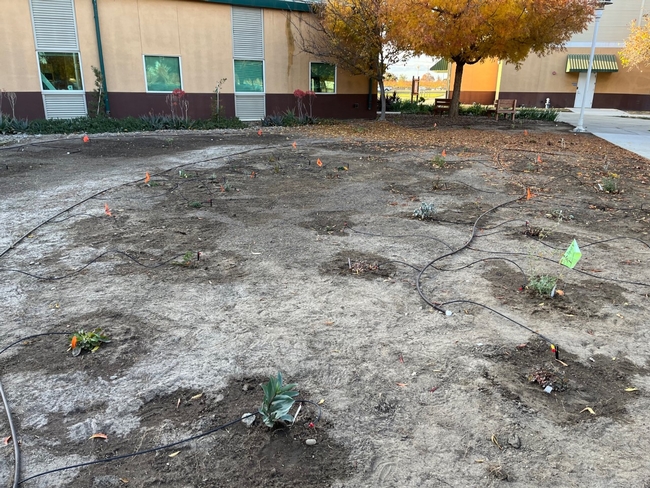
If you prefer to donate by check, please make it out to: UC Regents and send to:
UCCE Stanislaus County Master Gardener Program
3800 Cornucopia Way, Ste A
Modesto, CA 95358
Thank you!
*sorry for any confusion, the last post said Nov 28 was giving Tuesday which is incorrect and has been changed.
Anne Schellman has been the UCCE Master Gardener Coordinator for Stanislaus County since 2018.
- Author: Anne Schellman
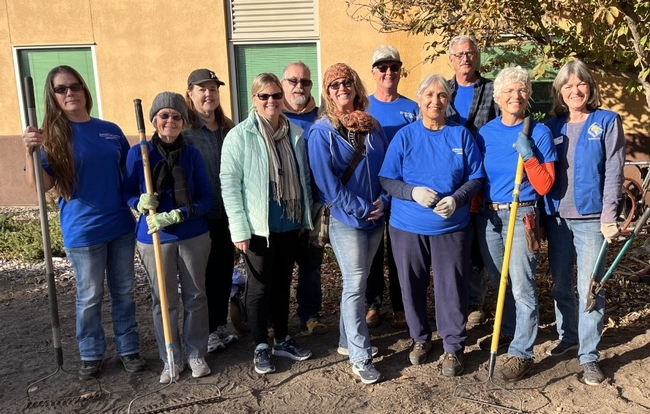
Currently, we are installing demonstration gardens to be used as outdoor classrooms that the public can visit anytime, and we need your help!
Pollinator Garden
Our Pollinator Garden is in the installation stage, and we could not be more thrilled. Currently, the irrigation and native plants are going in. Our Master Gardener volunteers were hard at work leveling, raking, and planting just this week.
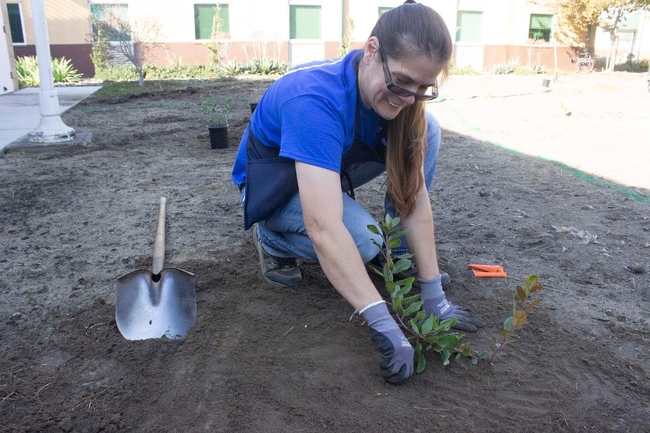
A big “thank you” to the West Resource Conservation District that helped us prepare the garden site, and to our local North San Joaquin Valley Chapter of the California Native Plant Society https://nsj.cnps.org/ for purchasing and donating the native plants! Many of these species are unusual and not normally found in the landscape. Although newly planted, everyone is welcome to stop by and visit*.
Your Funds Help Make this Garden Happen
Help make this demonstration garden come to life! Funds will be used to purchase additional plants, tools, and educational signage. Our big funding goal is a decomposed granite walkway. This is a pricey item, which can cost several thousand dollars. The benefits are a pathway accessible to everyone that avoids runoff and allows good drainage.
How to Give
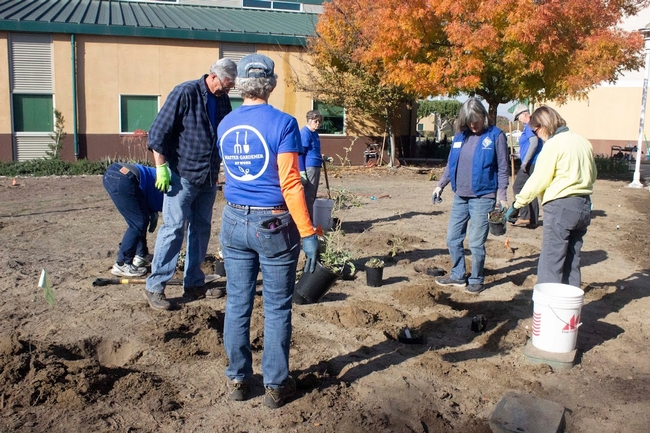
If you prefer to donate by check, please make it out to: UC Regents and send to:
UCC Stanislaus County Master Gardener Program
3800 Cornucopia Way, Ste A
Modesto, CA 95358
Thank you
We look forward to meeting you in the near future in our “outdoor classroom” aka Pollinator Garden for classes on pollinators, California native plants, and how you can support them in your backyard garden, patio, apartment, or classroom.
* Our gardens are located at the Ag Center complex on the corner of Crows Landing and Service Roads in Modesto at 3800 Cornucopia Way, 95358. The Pollinator Garden is on the east side of the Stanislaus building, while the Sensory Garden is on the west side.

